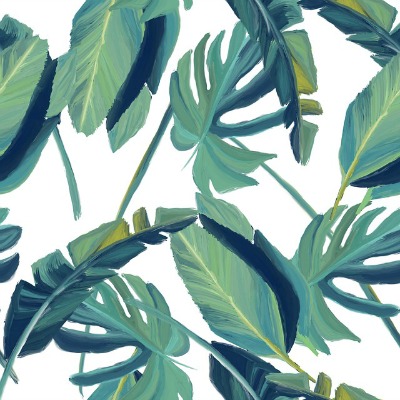The types of leaves in most angiosperms may be broadly classified into simple and compound.
Simple leaves consist of a single blade such as those in corn, rice, banana, and mango whereas compound leaves have a blade that is separated into two or more parts on a common petiole, such as those in palms (e.g. coconut and African oil palm), legumes (e.g. soybean and peanut), malunggay or Moringa tree, and many ferns.
Types of Simple Leaves
Based on Leaf Margin
Simple leaves are classified according to variations in leaf margins.
The leaves are called entire when the margins are continuous, without teeth, notches or divisions;
- serrate when toothed with regular, sharp teeth pointing forward like the teeth of a saw;
- dentate when the teeth, which are pointed, are directed outward;
- crenate when the teeth are rounded;
- repand or undulate when the margin has a wavy pattern;
- sinuate when the margin is strongly undulate;
- incised or cut when the margin is cut into deep, irregular teeth;
- lobed when deeply cut but the incisions do not exceed half-way to the midrib;
- cleft when deeply cut with the incisions extending more than half-way to the midrib;
- parted when the divisions are close to the midrib;
- and divided when they extend to the midrib.
Based on Shape
There are various types of leaves according to their shape.
Linear leaves are narrow and many times longer than wide;
- lanceolate are lance- or spear-shaped;
- oblanceolate are shaped like lanceolate but in the reverse direction; oblong are longer than broad with the sides nearly parallel;
- elliptic or elliptical are ellipse-shaped;
- obovate are shaped like the reverse of ovate;
- oval is shaped like an elliptic but the width is more than one half of the length;
- ovate are egg-shaped with the widest portion below the middle;
- orbicular is more or less circular in outline;
- spatulate when shaped like a spoon; cuneate is wedge-shaped;
- falcate is shaped like a sickle;
- flabellate is fan-shaped, and reniform is kidney-shaped.

Based on Color
The different types of leaves also differ in color.
Leaves are predominantly green due to the abundance of the chlorophyll pigment which reflects most of the green wavelength of light which is in turn perceived by the naked eye.
But there are many variations in leaf color, caused by levels of other pigments such as the pink, red, purple, yellow, or blue anthocyanins, the yellow xanthophylls, and the red and orange carotenes, or the absence of any pigment which causes variegation.
The chlorophyll pigment has the natural ability to obscure the other pigments, but it is degraded as the leaves senesce.
Some Types of Compound Leaves
In the compound type of leaves, the individual parts of the leaf blade are called leaflets and their leaf stalks are the petiolules.
The extension of the petiole bearing the leaflets is called the rachis.
The term frond is also used to refer to the compound leaves of palm plants and ferns.
Compound leaves are those in which the central axis or rachis has further subdivisions.
There are several types based on the number and arrangement of leaflets.
Pinnately compound or pinnate leaves have leaflets that are attached along the sides of a main stalk or rachis such as in coconut and many other palms.
Bipinnately compound or bipinnate leaves are those in which the rachis is divided into lateral axes containing pinnately arranged leaflets.
Tripinnately compound or tripinnate leaves are similar to bipinnate leaves but the lateral axes are further subdivided into axes containing pinnately arranged leaflets.
Palmately compound or palmate leaves are those in which four or more leaflets are attached to a common point, usually at the tip of a petiole.
Other Types of Leaves
In addition, plant leaves, and also other parts of the plant body, maybe fleshy, succulent, coriaceous, chartaceous or membranaceous.
Fleshy leaves are thick and soft; succulent is more or less fleshy and juicy; coriaceous are firm or tough like leather; chartaceous have paper-like texture, and membranaceous are thin and more or less flexible.
These types of leaves are based on texture.
The surfaces of plant leaves, as well as stems, fruits, and other plant parts, maybe glabrous, rugose, striate, scabrid, tuberculate, muricate, or echinate.
Leaves are described as
- glabrous if they are entirely smooth and devoid of hairs or any projections;
- rugose when wrinkled; striate when marked with slender longitudinal lines;
- scabrid when rough to the touch due to small projections;
- tuberculate when covered with wart-like protuberances;
- muricate when there are protuberances that are hard and pointed;
- and echinate when there are protuberances that are stiffer and longer, almost awn-like.
